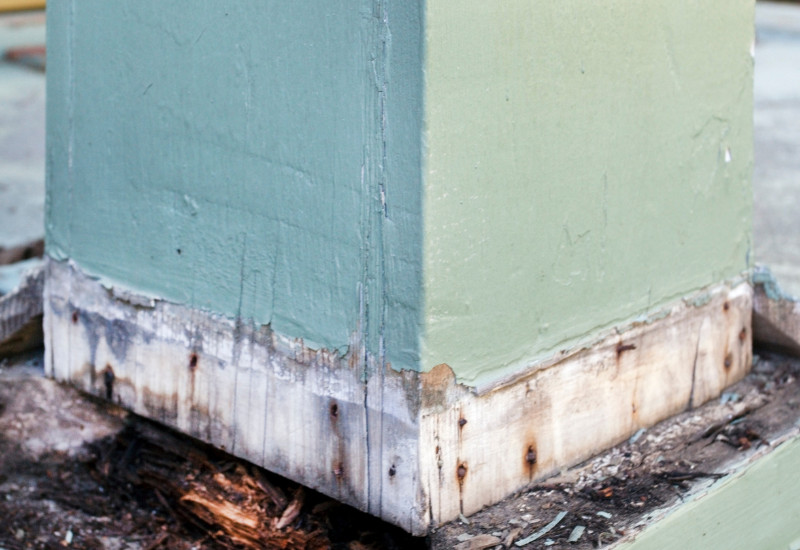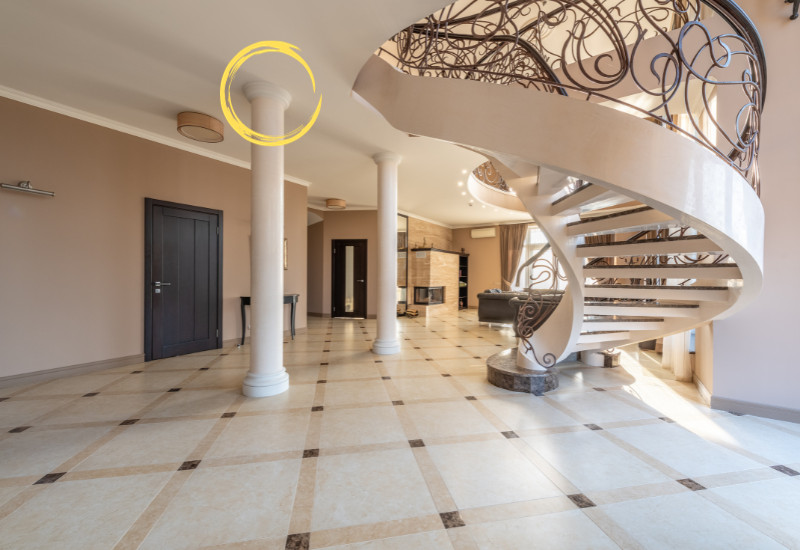When undertaking a remodeling project or assessing the stability of your home, it’s crucial to understand which columns are load-bearing and which are merely decorative.
Load-bearing columns are essential for the structural integrity of the building, as they support the weight of the upper floors and the roof. In contrast, decorative columns have no impact on the stability of the structure and are purely for aesthetic purposes.
To determine if a column is load-bearing, consider factors such as its material, position, and size. Typically, load-bearing columns are made of sturdy materials like wood, stone, fiberglass, or metal.
Additionally, you could consult your home’s blueprints or building plans, which should indicate whether a column supports the structure or only serves as decoration.
Conduct a visual inspection of the column base, capital, and potential seams for any brackets or support beams that might indicate their load-bearing nature. Keep in mind that the presence of L-brackets bolted into the ceiling or floor can be an indicator of a load-bearing column. If you’re uncertain, it’s always best to consult with a structural engineer who can assess the column’s role in maintaining your home’s stability and help navigate any necessary modifications or repairs.
5 Tips That Tell You If Your Column is Load-Bearing

When trying to determine if a column is load-bearing, there are several giveaways that can assure you of its structural integrity. Here are five tips that can help you identify a load-bearing column in your structure:
Check the Column Material and Size
Load-bearing columns are typically made of solid materials like wood, steel, or concrete blocks. They are also often larger and more solid than decorative columns, which can be made of lighter materials like cellular PVC.
Keep in mind that a column’s size, thickness, and material play a significant role in its ability to provide structural support.
Inspect the Column’s Position and Connections
Load-bearing columns are strategically placed to support beams or joists in your structure and transfer the weight to the foundation.
Look for columns that connect directly to a beam, foundation, or base, as this can indicate its load-bearing nature.
When it comes to your outdoor space, the load-bearing columns will often be found at the corners along porches. This allows an evenly displaced weight that can be managed much more easily.
Look for Brackets and Supports

If a column is load-bearing, it should be securely fastened to beams or joists using brackets, such as L-brackets or other hardware that connects the column to the foundation. This reinforces the structural integrity of the column and prevents any potential damage or instability.
Don’t be fooled by deceivingly aesthetic PVC coverings, as these can often be a simple sleeve to hide the rigid interior material. Both the supporting posts and brackets are usually hidden for better selling appeal.
So before you give up your search, check for seams along the edges.
Examine the Surrounding Area
Check for any cracks or damage to the walls, ceiling, or floor near the column, as this could indicate excessive weight being supported by the column. Inspecting the condition of other structural elements in the area can provide clues as to whether a column is load-bearing or simply decorative.
Look Beyond the Capital

If you’re unsure about a column’s load-bearing nature and have tried the previous methods, you can get a closer look by pulling back the capital. The capital of a load-bearing column is the decorative or functional element located at the top of the column, just below the ceiling.
The capital serves to transfer the weight of the structure above the column to the shaft of the column, which then distributes the weight to the foundation below. Capitals can be made of various materials, including wood, stone, or plaster, and can be designed in multiple styles, from simple and plain to highly ornate and decorative.
If you find it relatively easy to pull the capital back, chances are it isn’t load-bearing.
By following these tips, you should have a good shot at identifying whether your column is load-bearing and ensuring the safety and stability of your structure. But remember, when in doubt, always consult a professional for guidance.
Can you remove load-bearing columns?
If you determine that your column is load-bearing, you might worry that your remodeling plans have come to a screeching halt. But fear not!
Yes, you can remove a load-bearing column, but it’s essential to take proper precautions and consult a professional to maintain your home’s structural integrity. With careful inspection and planning, the distribution of your structural weight can be reapplied to your liking.



